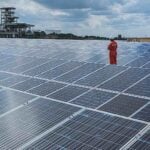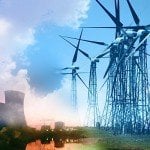The US Department of Energy is funding research that could lead to the building of the world’s largest offshore wind turbines. The turbine blades being developed are 200 metres long and would be attached to towers more than 400 metres tall. For perspective, these turbines would be approximately three-quarters the height of Toronto’s CN Tower, which is 553 metres tall. Each turbine would be capable of generating 50 MW of electricity. The world’s biggest turbine at present is in Japan; it has 80-metre blades and a capacity of 7 MW. Most wind turbines produce power in the 1–2 MW range.
As overwhelming as the sheer size of the blades is, there are even more radical elements to the design. Inspired by the design of the hurricane-resistant palm tree, which is light and has a segmented trunk that bends in the wind, and fronds that flatten out horizontally in high winds, engineers at Sandia National Laboratories created the Segmented Ultralight Morphing Rotor (SUMR), based on the principle of biomimicry. In very high wind conditions, the turbine blades are designed to bend and align themselves with the wind direction, as palm fronds do, thus reducing the risk of damage.
The design makes it possible to build the blades large enough to generate such enormous capacity. The lead designer for the project at Sandia said that conventional blades on that scale would be too heavy and too expensive to manufacture, deploy, and maintain. Offshore wind installations in general are expensive. The larger the turbine deployed, the greater the energy captured, and the more cost-effective they become.

Other institutions working on the project include the University of Virginia, the University of Illinois, the University of Colorado, the Colorado School of Mines, and the National Renewable Energy Laboratory.
Globally, wind installations grew by 25 per cent in 2014, reaching 62,000 MW of capacity. In Europe, the UK has the most installed offshore wind power, 5,061 MW, followed by Germany, which added 2,282 MW last year alone. In the US, the Department of Energy has set the goal of providing 20 per cent of the nation’s energy from wind by 2030. The use of “exascale” turbines such as the one currently being developed could help it meet that goal.

































